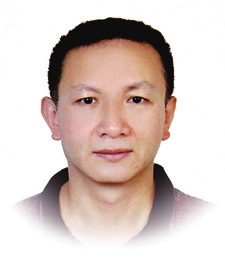
Winton Dong dht0620@126.com A CHINESE surveying team successfully reached the summit of Mount Qomolangma — known to Westerners as “Mount Everest” — at 11 a.m. Wednesday, to measure the height of the world’s highest peak. It is not an easy job to climb to the top of the mountain barehanded even for experienced climbers, not to mention Chinese researchers with heavy loads of scientific equipment. Two former attempts in the past weeks failed due to the capricious weather that resulted in heavy snow. The Chinese surveyors judged the optimal time, seized the best weather window and succeeded in its third attempt to reach the summit. Weather forecasts for the north and south slopes of Mount Qomolangma during the climbing process are provided by the meteorological department of the Tibet Autonomous Region and a professional mountaineering meteorological institution in Switzerland, respectively. The surveying team, consisting of 42 professional Chinese climbers and researchers, was jointly organized by the Ministry of Natural Resources, the Ministry of Foreign Affairs, the General Administration of Sport of China and the Tibetan regional government. The core of the mission is to accurately measure the height of Mount Qomolangma, which can be used in research fields such as geodynamics. Many technical innovations and breakthroughs that have been applied in the survey include the application of the BeiDou 3 Navigation Satellite System, advanced domestic surveying and mapping instruments such as an airborne gravimeter, snow-depth radar, meteorological measurement instruments, and 3-D interactive virtual reality. According to the Ministry of Natural Resources, it may take two to three months for Chinese researchers to calculate, analyze, verify all data and finally release the exact height of Mount Qomolangma. Sitting on the China-Nepal border, Mount Qomolangma’s northern part is located in Xigaze Prefecture in Southwest China’s Tibet Autonomous Region. Enriched with many high peaks including Qomolangma, Tibet has long been considered a heaven for mountaineering lovers from all over the world. The remeasurement of the world’s highest peak is of special significance. From the scientific perspective, Mount Qomolangma is located in the collision and compression zone between the edges of the Indian and the Eurasian tectonic plates, where crustal movement is active. Precisely measuring the height of the mountain is greatly beneficial to the study of the elevation changes of the Himalayas and Qinghai-Tibet Plateau. Actually, China has made unceasing efforts to measure the height of Qomolangma in the past centuries. The Chinese made their first survey of the mountain more than 300 years ago in the Qing Dynasty (1644-1911). This year also marks the 60th anniversary of the first expedition to Qomolangma from the Tibetan side and the 45th anniversary of China’s first accurate measurement of Qomolangma’s height. Since the founding of the People’s Republic of China in 1949, the Chinese Government has conducted six rounds of large-scale surveys and scientific research of the mountain, releasing the height of the peak twice – it stood at 8,848.13 meters in 1975 and 8,844.43 meters in 2005, respectively. The expedition is also a symbol of Chinese people’s determination and confidence to tide over present difficulties and their unyielding spirit. Among the 42 surveyors who took part in the remeasurement campaign this time, nine are from China University of Geosciences (Wuhan), a famous higher learning institution in the sector. They carried Chinese national flags bearing slogans such as “Stay strong, Wuhan” to the top of the world to show their support for the Chinese city that was hit the hardest by the COVID-19 pandemic. In this regard, the Chinese surveyors were not only climbing a physical mountain, but also a spiritual mountain in their minds. (The author is the editor-in-chief of Shenzhen Daily with a Ph.D. from the Journalism and Communication School of Wuhan University.) | 
